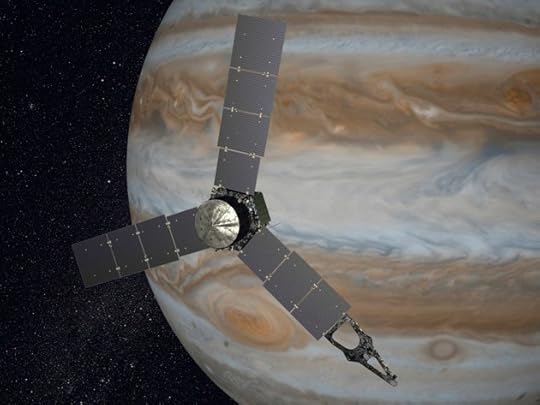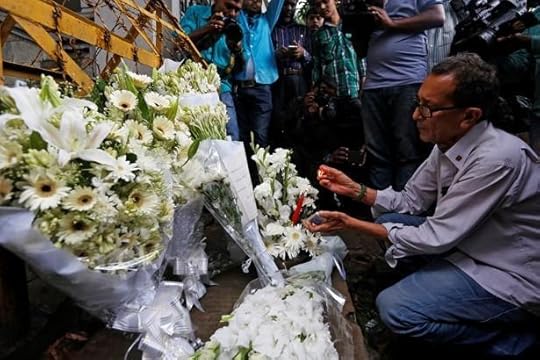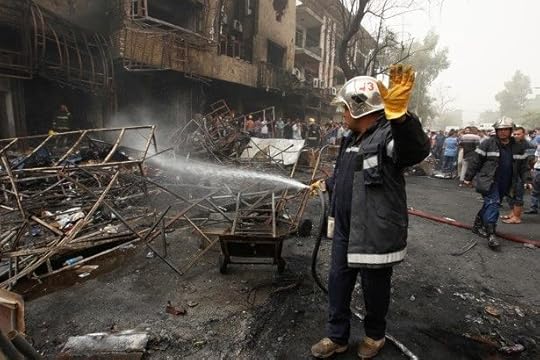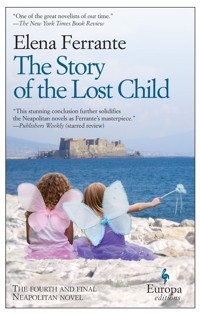Atlantic Monthly Contributors's Blog, page 128
July 5, 2016
The Filipino President's First Days In Office

Filipino President Rodrigo Duterte on Tuesday accused five police generals of being involved in the drugs trade, and said he didn’t regret the killings of dozens of suspected criminals in his first days in office.
About 30 people with suspected ties to drug trafficking or robberies have been killed since Duterte took office June 30. He ran on a platform of cracking down on criminals, even telling the public to kill criminals themselves, and has taken a harsh line against corruption.
On Tuesday, Duterte accused five police generals—three retired and one a former mayor—of corruption.
According to Reuters, Duterte said:
"It's going to be a dirty fight, it's going to be a bloody fight. I am not apologizing for it," Duterte said.
"As public authority, mine and mine alone, I assume full legal responsibility for it."
Duterte appears determined to follow through with what was the only substantive election promise he made - to wipe out drugs gangs and end crime in six months. He has been dubbed "the executioner" and "the punisher" among his supporters and critics alike.
Since Duterte took office, police have cracked down on areas of high crime, and the bodies of suspected criminals have been left out for the public to see, including those of two men found under a bridge in the country’s capital, Manila. Those two men were seen Saturday morning with their faces bound in duct tape, and with signs taped to their shirts that read: “Don’t follow my example. I am a pusher.”
Duterte has called for the recruitment of 3,000 new police to wipe out the criminals he has said contribute to “deterioration of law and order” in his country.
One of the generals Duterte accused of corruption, Vicente Loot, has denied any involvement in the drug trade. Instead, Loot called the accusal political retribution.

Overhauling French Intelligence Agencies

A French parliamentary inquiry examining the Paris attacks of 2015 has recommended that the country’s many intelligence agencies be merged to create a single agency.
Here’s more from Deutsche Welle:
The commission made a series of key recommendations at government level: to create an agency to fight against terrorism; to bring together the three elite forces GIGN, Raid and BRI; creation of a national intelligence agency; greater security measures to be taken at international airports and improvements to the judicial and prison system, where many assailants have been radicalised in the past.
The commission was set up to investigate the failures that led to two terrorist attacks in France last year: The January 2015 attack on Charlie Hebdo and a supermarket, and the November attack at multiple locations in the French capital. Together, the attacks killed 147 people.
Georges Fenech, the commission’s president, said all the suspects involved in the attacks had been known to authorities.
The report, based on 200 hours of interviews in several countries over six months, also found that coordination among European intelligence intelligence was poor.
“Europe is not up to the task,” Sebastien Pietrasanta, the Socialist lawmaker, said.
The commission also found the state of emergency imposed after the November attacks had a “limited impact” on security.

July 4, 2016
Juno’s Triumphant Night

Scientists and space enthusiasts celebrated late Monday night as the spacecraft Juno successfully entered Jupiter’s orbit after five years and 1.7 billion miles of space travel.
“We just did the hardest thing NASA’s ever done,” Rick Nybakken, Juno’s project manager, could be heard telling his colleagues amid cheers in the moments after the spacecraft completed its task.
The successful maneuver, known as an orbital insertion, was executed via a series of pre-programmed commands that engineers transmitted hundreds of millions of miles to the outer solar system. The move, which represented the riskiest moment in the mission since Juno launched in August 2011, involved firing the spacecraft’s main engine so that the probe could slow down enough to leverage the planet’s gravity for a shift into its orbit.
Had things gone differently, Juno would have spun off into space. There was plenty else that could go wrong. The New York Times, for instance, kept this running list of doomsday possibilities in the hours leading up to the maneuver: “Juno blows up... The engine doesn’t fire at all... It crashes into something... It flies too close to Jupiter and is ripped to pieces... The computer crashes.” Juno isn’t totally in the clear yet; it still needs to turn its solar arrays back toward the sun so it can continue to operate.
Confirmation that the probe had successfully entered Jupiter’s orbit came with a curt three-second beep. Now, Juno is embarking on a science mission that will take humankind closer to Jupiter than ever before—within about 2,600 miles of planet’s cloud tops.
Even before tonight, however, Juno had already made history. It is the fastest manmade object ever built; at a speed of 165,000 miles per hour, it’s five times faster than New Horizons, seven times faster than Apollo 11, and 122 times faster than the Concorde. In January, Juno broke the record to become humanity’s most distant solar-powered envoy. “Prior to Juno, eight spacecraft have navigated the cold, harsh under-lit realities of deep space as far out as Jupiter,” NASA wrote at the time. “All have used nuclear power sources to get their job done.”

Lockheed Martin
Now, planetary scientists on Earth will wait for Juno to complete a 53-day orbit, after which the probe will begin to transmit a heap of data about what it observes. Juno is set to orbit Jupiter 37 times in just under two years. “So much about the environment that we’ll have to withstand is unknown,” said Heidi Becker, an engineer at the Jet Propulsion Laboratory in a video created by the agency. “Nothing’s really certain about what’s going to happen.”
Juno is equipped with cameras, an ultraviolet spectrograph, a magnetometer, a microwave radiometer, and other instruments that planetary scientists hope will help them understand the monster planet like never before. They want to determine what Jupiter is made of, how much water it contains, and how it formed in the first place.
“I view Jupiter as a missing link,” said Barry Mauk of the Johns Hopkins University Applied Physics Laboratory in a statement before the orbital insertion. “Juno is not only going to help us better understand Jupiter, it’s going to help us better understand the universe around us and our place in it.”
Jupiter has been called a solar system in its own right. It is enormous, with a diameter more than 11 times the size of Earth. Its magnetosphere is massive, stretching all the way to Saturn’s rings, and powers huge permanent auroras—“the most intense and interesting aurora in the entire solar system,” Mauk said. Even Jupiter’s famed Great Red Spot is three times the size of our planet. The gas giant also holds clues about the origins of the rest of the solar system, including early planets that once surrounded Jupiter.
“It’s a unique record for the outer solar system of what these protoplanets might have been like,” Jonathan Lunine, an astronomer at Cornell University, said in a statement. “We’re doing the astronomical equivalent of ‘broken pottery’ archaeology, trying to piece back together the original molecules and ice grains that got evaporated and dissociated inside Jupiter billions of years ago.”

The Triple Suicide Attacks in Saudi Arabia

Updated July 4 at 8:01 p.m. EST
Suicide bombers attacked in three Saudi cities Monday in a span of 24 hours, killing at least four people.
An attacker detonated a device near the U.S. consulate in Jeddah, located southwest of Medina on Saudi Arabia’s coast. Two security officers were slightly injured as they tackled the assailant, who died. No one else was injured.
Another attacker detonated an explosive in Qatif, located in the east on the opposite coast, the AP reported. That attack occurred near a Shia mosque. No injuries were reported.
Then, a suicide bomber detonated occurred near the Al-Masjid an-Nabawi, or the Prophet’s Mosque, killing four guards.
Al-Masjid an-Nabawi is the burial place of the Prophet Muhammad, and is the second-holiest site in Islam, after al-Masjid al-Haram, or the Grand Mosque, in Mecca.
The back-to-back attacks come in the last days of Ramadan, the Islamic holy month of fasting. They also follow a weekend of violence by the Islamic State. In Baghdad, a truck bomb killed nearly 149 people and wounded scores more in a busy commercial area Sunday. In Dhaka, Bangladesh, militants killed 22 people, mostly foreign nationals, in an hours-long siege at a restaurant Friday night.

Exit, Nigel Farage

British politician and Brexit proponent Nigel Farage has resigned as leader of the United Kingdom Independence Party (UKIP), less than two weeks after a national referendum threw the United Kingdom out of the European Union and into political and economic chaos.
Farage said at a press conference in Westminster Monday he entered politics to “get Britain out of the EU,” and not to become “a career politician.” Now that voters have chosen to leave the 28-member bloc, “I now feel that I have done my bit,” he said.
“During the referendum campaign, I said, ‘I want my country back,’” he said. “Now what I’m saying today is, ‘I want my life back.’”
It is the third time in a decade Farage has resigned as leader of UKIP, the right-wing party skeptical of the EU and its immigration policies. Farage said he would watch the negotiations between the UK and EU, which will determine the UK’s formal exit within two years, “like a hawk.”
Farage is the latest pro-Brexit campaigner to step back from the limelight after the historic vote. Boris Johnson, the former London mayor, said last week he would not run for prime minister after David Cameron, the leader of the Conservative party who urged Britons to vote to remain in the EU, announced he would resign from the office in October.
Douglas Carswell, UKIP’s sole member of parliament. Carswell told the BBC’s Daily Politics show Monday that Farage’s rhetoric on immigration “went too far,” The Guardian reported.
“And it’s not just morally wrong, it’s electorally disastrous,” Carswell said. “This is a decent, generous country. People have a legitimate right of feel a sense of anger with their politicians but the answer to that is not to play on people’s fears and anger but to promise the hope of something better.”
On Twitter, Carswell’s response to Farage’s resignation was far shorter:
July 3, 2016
Mourning in Bangladesh

Mourners in Dhaka held a candlelit vigil Sunday night for the victims of the terrorist attack at a restaurant that left 22 people dead, marking the first of two days of national mourning in Bangladesh.
People held white candles in remembrance of those killed in the assault Friday night. A makeshift memorial of candles, flowers, and notes had been set up near the site of the carnage, the Holey Artisan Bakery, an eatery popular among expatriates in the city.
“I request everyone to unite against these handful criminals,” said Shiekh Hasina, Bangladesh’s prime minister, in a televised address Sunday.
Seven assailants, armed with bags full of weapons, stormed the restaurant Friday night and stayed there for nearly 11 hours before police raided the building. By the end of the siege, 20 hostages were dead: nine Italians, seven Japanese, two Bangladeshi, and a citizen each from India and the United States. Most had been killed with sharp weapons, including machetes. Two police officers who arrived after gunshots were heard also died. All but one of the attackers were killed by police; the remaining attacker was captured alive. The Islamic State said it was responsibility for the rampage, but Bangladeshi officials have denied the claim.
The gunmen appear to have targeted foreigners; witnesses say the attackers asked Bangladeshi citizens to come out of hiding inside the restaurant. Police rescued 13 hostages after the siege was over.
The Italian victims, most of whom worked at textile companies, were dining together when the gunmen entered. They are, according to the AP, Nadia Benedetti, 52; Claudio Cappelli, 45; Vincenzo D'Allestro, 46; Claudia Maria D'Antona, 56; Simona Monti, 33; Adele Puglisi, 54; Maria Riboli, 34; Cristian Rossi, 47; and Marco Tondat, 39.
The Japanese were also dining together that night, and worked for Tokyo-based consulting companies and on a Japanese government aid project in Dhaka. They are Koyo Ogasawara, 56; Makoto Okamura, 32; Yuko Sakai, 42; Rui Shimodaira, 27; Hiroshi Tanaka, 80; Nobuhiro Kurosaki, 48; and Hideki Hashimoto, 65.
Tarushi Jain, 19-year-old student at University of California-Berkeley who was visiting her father in Bangladesh, was dining with her friends Abinta Kabir, a U.S. citizen and a student at Emory University in Georgia, and Faraaz Hossain, also a student at Emory who was living in Dhaka. All three were killed.
The Bangladeshi victims and police officers have not yet been identified.
Dozens of people have been killed in Bangladesh by suspected Islamist extremists in recent years. But the attacks were mostly isolated incidents targeting individuals like secular bloggers, LGBT activists, or professors. Hostage situations like the one at Holey Artisan Bakery are unprecedented in Bangladesh, and the Gulshan district, where the attack occurred, is considered a safe area, home to affluent residents and embassies.

Bombings in Baghdad

Updated July 3 at 12:15 p.m. EST
At least 115 people were killed and scores wounded in two bombings in Baghdad Sunday.
The first attack occurred in the central Karrada district of Baghdad outside a crowded shopping center, the AP reported. A suicide bomber detonated explosives inside a pickup truck in front of the building, killing dozens and wounding as many as 170. At least 15 of the fatalities were children. Photos from the scene showed the charred remains of the building, its front blown out, and the street in front of it. Some people remain missing.
More details of the attack from the AP:
The suicide bomber struck shortly after midnight, when families and young people were out on the streets after breaking their daylight fast for the holy month of Ramadan. Most of the victims were inside a multi-story shopping and amusement mall, where dozens burned to death or suffocated, officials said.
The Islamic State terrorist group claimed responsibility for the attack in a statement circulated online, Reuters reported Sunday.
The second attack occurred in Baghdad’s northern Shaab area, when an improvised explosive device detonated, killing five people and wounding 16 others. No group said it was responsible, but ISIS is suspected.
The attack comes days after ISIS militants stormed a restaurant in Dhaka, the capital of Bangladesh, and killed 20 people, mostly foreign nationals. And it comes one week after the Iraqi military declared the city of Fallujah, located about 50 kilometers, or 30 miles, west of Baghdad, “fully liberated” from ISIS after a weeks-long military offensive. Fallujah was the first Iraqi city to fall to ISIS in early 2014. At the end of that year, the militant group controlled about one-third of the country, but by 2016 had lost significant territory.

The Subtle Genius of Elena Ferrante’s Bad Book Covers

With their sandy beaches and windswept women, the U.S. editions of Elena Ferrante’s novels look familiar even if you’ve never seen them. That’s because they look like virtually every other book authored by a woman these days—not to mention like bridal magazines, beach-resort brochures, and even “Viagra ads.” On Twitter and beyond, readers have described Ferrante’s covers as “horrible,” “atrocious,” “utterly hideous,” and as a “disservice” to her novels. At Slate, one commenter approvingly mentions a local bookstore’s decision to display one of Ferrante’s books in plain brown paper, reviving a practice used for Playboy and the infamous issue of Vanity Fair with a pregnant Demi Moore on the cover. The implication, of course, isn’t that Ferrante’s covers are obscene in the traditional sense—just obscenely bad.

Europa
The Neapolitan novels, as the Italian author’s beloved tetralogy is called, chronicle the friendship between two ambitious young women over the course of 50 years and some 1500 pages. Since the publisher Europa released the first book, My Brilliant Friend, in 2012, the series has sold over a million copies in the U.S. and garnered glowing critical praise. Her covers, by contrast, have earned comparisons to “$4 romance book[s] found in an American gas station. ” The complaints are so numerous that Ferrante’s publisher even expressed concern to Slate that “many people didn’t understand the game we we’re playing, that of, let’s say, dressing an extremely refined story with a touch of vulgarity.” Certainly, readers aren’t required to enjoy the cloying sensibility of the images just because they’re intentionally bad, and because Ferrante herself chose them. But to despise the covers—and, by extension, the kind of novel they evoke—in the name of good literature is to buy into the destructive stigma that has long been attached to “women’s fiction” as a genre.
It’s true that Ferrante’s U.S. paperbacks look a lot like “chick-lit,” the favored slight for disparaging commercial, female-authored fiction. It’s also true that “chick-lit” that has cast a long, pastel shadow over Ferrante and her readers. Her covers are reminiscent of books by Jennifer Weiner, the reigning queen of pop romance who last year clashed with Jonathan Franzen over the fact that genre fiction by men has long been deemed more worthy critical attention than genre fiction by women. Weiner’s covers, like Ferrante’s, have a high frequency of ocean horizons and women with their backs turned. Their visual formula isn’t exactly “hideous,” as some readers claim, but it’s certainly tired, and not a little silly: Looking at a Ferrante or Weiner cover, it’s easy to conclude that no woman in their fiction has ever lived inland, or so much as looked directly at a camera.

Simon & Schuster
Weiner has more in common with Ferrante than covers alone, and there’s a whiff of hypochondria to the reader backlash—a fear that Ferrante’s high-minded fiction might be contaminated by mere resemblance to more commercial fare. That anxiety forgets just how commercial Ferrante really is, right down to her soapy, page-turning plots and seven-figure book sales. But if there’s a prim contempt in a lot of Ferrante cover-bashing, there’s also justified suspicion of the long history of sexist publishing practice, in which any book by a woman is automatically marketed as “women’s fiction.”
For The Guardian in 2008, Diane Shipley interviewed a number of female authors on the subject of the “chick-lit cover up,” or the imposition of that style of covers on “any book written by a woman, whether it fits the genre definition or not.” Shipley describes one woman, Sue Hepsworth, as the author of a novel that “poignantly explores the pain of losing a parent;” its cover, according to Shipley, “makes it look like it’s about garden parties and designer clothes.” She also invokes novels by Fay Weldon and Rosy Thornton that similarly demonstrate the “blight” of “misleading” covers on literary books. “If you’re a woman releasing a book,” she writes, “then, you should apparently expect pale colors, swirly writing, and an insipid tag line—whether your story is a moving story about grief, a blog-turned-bestseller about life in Paris, or a potential chick lit-classic.”
Authors are right to be irritated: No writer should have so little say in how their books circulate in the world. But a resentment of unsophisticated covers is usually, in part, an anxiety about unsophisticated readers. Weldon and others are concerned that publishers are underselling the ambition of their novels by selling them primarily to women, forcing them out of running for highbrow prestige. Indeed, when commenters describe Ferrante’s covers as a “disservice,” they imply that, disfigured by bad covers, her books will be lost in the ranks of “beach-reads,” where readers of literary fiction won’t ever find them. And indeed, many of them won’t.
Male readers generally aren’t enticed by chick-lit covers, and many female readers are also turned off by them, with good reason. Like any form of advertising, book covers tell women what they want by surmising who they want to be. And according to the typical chick-lit cover, as seen accompanying novels by Sophie Kinsella and Gemma Burgess, that’s skinny white women living droll, hot-pink lives and buying shoes. To purchase a book marketed this way can feel like bankrolling your own belittlement—which many consumers of culture do cheerfully enough whenever we watch TV or turn on the radio. But for many readers, novels promise an alternative to the shallowness and boilerplate misogyny of popular media. If we go to novels for complexity and depth, then a cover that looks hastily assembled in a Forever 21 accessories aisle can void at the outset the very promise of reading fiction.
But while Ferrante’s covers are definitely trite, there’s little about them that’s actually patronizing. There are no flowers or martini glasses or shopping bags on Ferrante’s covers, no high-heeled condescension. There are just images of women doing things that women, in fact, occasionally do: standing still, holding children, being on the beach. And yet, the very image of women doing things now strikes even women readers as unliterary.

Vintage
That’s a sad reaction, given that many literary pursuits are predominantly performed by women, despite institutional gender bias in the publishing industry. In total, American women buy more books than men and read more fiction, including literary works. In the U.S., they hold the majority of graduate and undergraduate degrees in literature. By these metrics, the image of a woman should seem literary by default—and courtesy of the chick-lit treatment, more and more women are appearing on the covers of literary fiction. Alice Munro, who won the Nobel prize in 2013, has a number of paperbacks fronted by wistful-looking women. As does Mary Gaitskill, whose celebrated novel The Mare looks like virtually every other book about a girl and a horse. The novels by Leslie Jamison and Roxane Gay, two of the most adored contemporary essayists, have covers that prominently feature women. And yet, readers like Claire Fallon still question why female writers “trade in highly gendered marketing” and novelists like Katy Brand feel defeated when their books are “automatically […] marketed as books for girls.” Literary women seem to believe the best way to give good books their due is to scrub all feminine images from their covers. While the designer of Ferrante’s Australian editions mocks the women’s-fiction conventionality of the U.S. covers, his own design is no less woman-centric—and no less market-driven—for being moodier and grayscale.

Pantheon
The outcry about covers like Ferrante’s seems built on the egalitarian hope that abolishing gendered book marketing will do away with gendered genres. While terms like “chick lit” and “women’s fiction” remain indelible, “lad’s lit” has never taken off, even though there are more than enough books by and about men to justify a snotty sobriquet. Fiction about women, however, is too often characterized as niche-fiction—as too narrow to appeal to anyone but women, or speak universally about lived experience and culture. As Rebecca Solnit wrote last year at Lithub, “a book without women is often said to be about humanity, but a book with women in the foreground is a woman’s book.”
Ferrante’s terrible covers and brilliant fiction suggest another view: that books about women aren’t about humanity, and shouldn’t have to be. The Neapolitan novels are full of mob hits, political violence, and natural disasters. But they’re primarily about the domestic lives of women: the turmoil of being a daughter, a mother, a friend; the ways that violence infiltrates households, forming and deforming girlhood. Her fiction isn’t interested in what it means to be human broadly, but in what it means to be a woman at a specific time and place. In interviews, Ferrante has said that the ambition of her writing is to make “the facts of ordinary life […] extraordinarily gripping when read,” which well captures the genius of her fiction.
It also captures the genius of her bad covers. Although the U.S. dustjackets are far from gripping, they’re wholly, unapologetically domestic. And by binding her novels with domestic images, Ferrante insists that the women’s domestic lives are as literary as any others. Her covers don’t deny the possibility that the Neapolitan novels could be construed as “women’s fiction”; they argue that her novels are “women’s fiction,” whether or not they’re compatible with modern romance. Her fiction testifies that women’s stories are important not because they’re universal, but precisely because they’re specific—because women’s experience of their “sex and its difference,” as Ferrante has described her subject, are worthy of art, and worth reading about.
For sure, the covers of commercial and “literary” fiction by women could stand to invest less in the appeal of beaches, and to free themselves from standard visual formulas. But in a literary marketplace where the very image of a woman is seen as antithetical to literature, Ferrante’s covers take an important stand. If her covers are a “game,” then readers at least know the price of admission: the willingness—or the humility—to be seen reading books about women in public.

July 2, 2016
Remembering Elie Wiesel

Elie Wiesel, the American Jewish writer and activist whose haunting accounts of survival in the death camps of Nazi Germany became the foremost narratives of the Holocaust, died on Saturday. He was 87 years old.
His death was announced by Yad Vashem, Israel’s museum of the Holocaust, on Twitter.
Yad Vashem mourns the passing of Elie Wiesel-Holocaust survivor, Nobel laureate, renowned author https://t.co/YhyhrvZqhl
— Yad Vashem (@yadvashem) July 2, 2016
Wiesel, born in Romania in 1928, was among the millions of European Jews rounded up and sent to concentration camps by Nazi Germany and its allies during World War II. Only a teenager at the time, he and his family were first deported to Auschwitz, where he was assigned to a labor camp, and then to Buchenwald shortly before its liberation by the U.S. Army in April 1945.
Ten years after the war ended, Wiesel wrote Night, his first written work on his experiences within the camps. The searing account of his and his father’s struggle to survive amid genocide and inhumanity became a touchstone of Holocaust literature and a staple of public-school curricula in the United States. It was the first of over fifty books he wrote over the following decades.
Wiesel also became an activist against racism and discrimination, eventually earning him the Nobel Peace Prize in 1986. In his acceptance speech, he spoke of the need to keep the Holocaust’s memory alive to prevent future genocides.
“We must always take sides. Neutrality helps the oppressor, never the victim. Silence encourages the tormentor, never the tormented. Sometimes we must interfere,” he said. “When human lives are endangered, when human dignity is in jeopardy, national borders and sensitivities become irrelevant. Wherever men or women are persecuted because of their race, religion, or political views, that place must—at that moment—become the center of the universe.”
A full obituary will follow.

Hillary Clinton Goes to the FBI

FBI investigators interviewed Hillary Clinton, the presumptive Democratic nominee for president, for three-and-a-half hours on Saturday as the probe into her use of a private email server while secretary of state enters its final stages.
The meeting took place at FBI headquarters in Washington, D.C.
“Secretary Clinton gave a voluntary interview this morning about her email arrangements while she was Secretary. She is pleased to have had the opportunity to assist the Department of Justice in bringing this review to a conclusion,” Clinton spokesman Nick Merrill said in a statement. “Out of respect for the investigative process, she will not comment further on her interview.”
FBI agents are looking into whether Clinton mishandled classified information on her private email server during her four-year tenure at the State Department. Clinton has previously characterized her decision to use the server as a “mistake,” but has strongly denied any criminal wrongdoing.
It’s not clear whether the investigation will result in criminal charges. FBI officials have avoided describing the probe as a criminal investigation. The Wall Street Journal noted in March there are no indications federal prosecutors have empaneled a grand jury, which would be necessary to file charges. And Clinton’s description of Saturday’s meeting as a “voluntary interview” suggests the FBI did not use a subpoena.
The interview comes after Attorney General Loretta Lynch said Friday she would defer to career FBI and Justice Department officials on whether or not criminal charges would be sought in the investigation. As my colleague David Graham explained Friday, the announcement followed an unusual episode in the lengthy saga:
FBI Director James Comey, whose organization is running the inquiry, and Attorney General Loretta Lynch, who would make the final decision on charges, have both worked to assure the public that they are acting independently, free of political interference.
That’s why Lynch’s recent visit with former President Bill Clinton has raised so many eyebrows. The two chatted Monday night at Phoenix airport. Both were at the airport, and Clinton apparently walked to Lynch’s plane unbidden to say hello. Lynch says that they did not discuss the email investigation, and that the visit was purely social. But the cloak-and-dagger nature of the meeting—visits across the tarmac at night—is enough to arouse suspicions, and The New York Times reports that the White House declined to say whether it was appropriate. What did they talk about? And if it really was purely social, what was Bill Clinton thinking? It should have been clear that the encounter would be controversial. Politico reports that the visit made “Democrats groan,” but Republicans, independents, and transparency advocates are in the groaning gallery too.
Donald Trump, the presumptive Republican nominee, swiftly pounced on the reports, describing the tarmac meeting as “terrible” and “so horrible.”

Atlantic Monthly Contributors's Blog
- Atlantic Monthly Contributors's profile
- 1 follower



